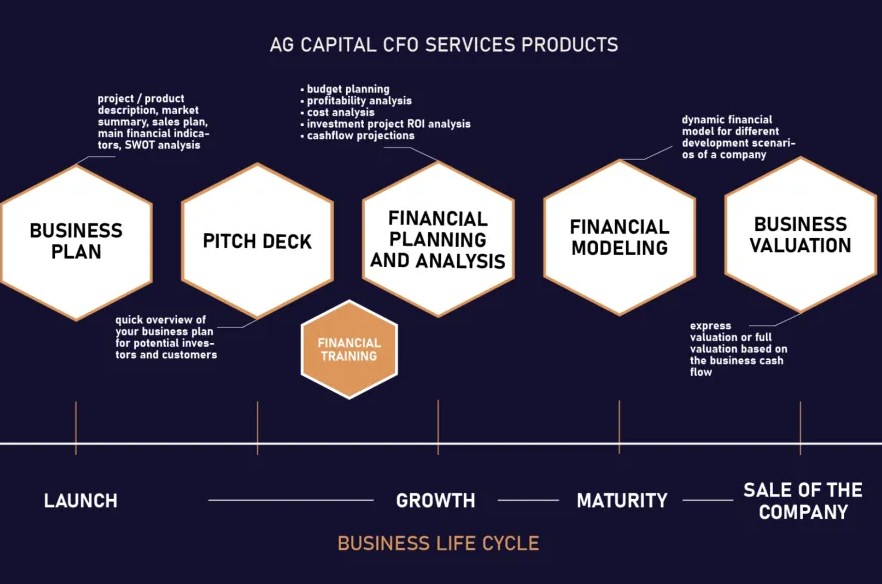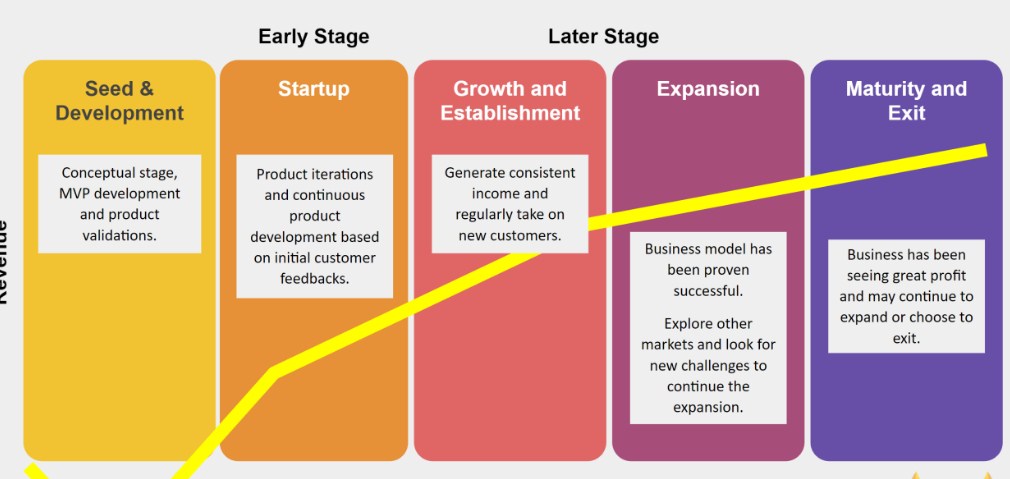Aspect of a Business Life Cycle – The business life cycle is an essential framework for understanding the stages of a business’s development, from inception to maturity and eventually to decline or renewal. Each stage of the business life cycle requires a different focus, set of strategies, and tools. In this article, we will explore how to match each aspect of the business life cycle to ensure optimal growth, improve efficiency, and maximize profitability. We’ll also cover the tools, technologies, and products that can help your business succeed at every stage.

Understanding the Business Life Cycle
The business life cycle consists of several stages, each with its own challenges and opportunities. Typically, these stages are:
- Seed and Development Stage
- Startup Stage
- Growth Stage
- Maturity Stage
- Renewal or Decline Stage
Each stage requires different strategies, resources, and solutions to navigate effectively.
How to Match Each Stage of the Business Life Cycle
Let’s break down the necessary steps to match each stage of your business’s life cycle with the right approach.
1. Seed and Development Stage
Focus: At this early stage, your main focus is on business planning, idea validation, and securing initial funding.
- Product Development: You must create a strong business plan and prototype to validate your business concept.
- Market Research: Understanding your target audience and their needs is crucial at this stage.
- Securing Funding: Depending on the nature of your business, you might need seed capital or investment.
2. Startup Stage
Focus: This is where you officially launch your business, develop a customer base, and begin marketing your product or service.
- Customer Acquisition: Focus on attracting early customers and gaining feedback.
- Scaling Operations: As demand increases, you need to scale your operations effectively.
- Digital Tools for Marketing: Leverage digital marketing tools like SEO, social media ads, and email campaigns to build awareness.
3. Growth Stage
Focus: This is the stage where your business sees rapid growth. Your focus is on expansion, refining your operations, and solidifying your market position.
- Optimize Operations: Use automation tools to streamline business processes.
- Increase Market Share: Invest in customer relationship management (CRM) tools and marketing automation.
- Hiring and Managing Teams: Use project management tools to handle a growing team effectively.
4. Maturity Stage
Focus: At this stage, your business is well-established. You need to focus on efficiency and maintaining your position in the market.
- Cost Reduction: Look for ways to optimize costs and maximize profitability.
- Brand Strengthening: Enhance brand loyalty through customer engagement and excellent service.
- Diversification: Consider diversifying your product line or services to avoid stagnation.
5. Renewal or Decline Stage
Focus: This stage involves either rejuvenating your business or deciding to wind down.
- Innovation and Diversification: Revitalize your business with new ideas, products, or services.
- Reevaluation of Operations: Analyze what’s working and what isn’t to decide on the next steps.
- Exit Strategy: If decline is inevitable, you should develop an exit strategy to transition out of the market gracefully.
Tools and Products to Match Each Stage of the Business Life Cycle
In order to efficiently navigate the different stages of the business life cycle, several tools and products can assist in optimizing operations and facilitating growth. Below, we will explore 5 key products designed to support businesses at various stages of the cycle.

1. QuickBooks Online – Financial Management Tool
Use Case: QuickBooks helps small and medium businesses handle their finances from day one to maturity. During the Seed and Development stage, it provides essential financial tracking, and as businesses grow, it scales with them.
Pros:
- User-friendly interface
- Scalable for growing businesses
- Excellent customer support
Cons:
- Somewhat costly for small businesses starting out
- Limited customization in the lower-tier plans
Price:
Starts at $25/month.
Features:
- Invoicing and billing
- Financial reporting
- Tax calculations
- Payroll integration
QuickBooks Online
2. HubSpot CRM – Customer Relationship Management
Use Case: Perfect for businesses in the Startup or Growth stage, HubSpot CRM helps you streamline sales processes, track customer interactions, and optimize lead generation efforts.
Pros:
- Free plan available
- Seamless integration with other tools
- Automated workflows
Cons:
- Can get expensive as you scale
- Limited features on the free plan
Price:
Free basic plan; Paid plans start at $45/month.
Features:
- Contact management
- Sales pipeline tracking
- Email marketing tools
- Reporting and analytics
HubSpot CRM
3. Slack – Team Collaboration and Communication
Use Case: Slack is ideal for businesses in the Growth and Maturity stages that need to maintain efficient communication and collaboration across teams.
Pros:
- Real-time communication
- Integrates with a variety of apps
- Easy-to-use interface
Cons:
- Can become overwhelming with many channels
- Lacks some advanced project management features
Price:
Free basic plan; Paid plans start at $6.67/user/month.
Features:
- Instant messaging
- File sharing and collaboration
- Integration with Google Drive, Trello, and more
Slack
4. Trello – Project Management Tool
Use Case: For businesses in the Growth and Maturity stages that are scaling, Trello helps organize projects, track tasks, and collaborate more effectively with teams.
Pros:
- Visual task management system
- Easy to use and intuitive
- Free plan available
Cons:
- Limited features in the free version
- Some advanced features are lacking compared to competitors
Price:
Free; Premium plans start at $5/user/month.
Features:
- Task assignment and tracking
- Checklists, labels, and due dates
- Board customization
Trello
5. Shopify – E-commerce Platform
Use Case: For businesses that need an e-commerce platform during the Growth or Maturity stage, Shopify provides everything you need to build and manage an online store.
Pros:
- User-friendly setup
- Extensive app marketplace for integrations
- Excellent customer support
Cons:
- Transaction fees unless using Shopify Payments
- Can be costly with added apps
Price:
Plans start at $29/month.
Features:
- Online store builder
- Secure payment gateway
- Inventory management
Shopify
Benefits of Using These Products
These tools not only make it easier for you to manage your business but also provide significant benefits:
- Efficiency: Automation and streamlined workflows free up time for your team to focus on high-priority tasks.
- Scalability: As your business grows, these tools grow with you, supporting larger teams, more customers, and bigger operational needs.
- Data-Driven Insights: The analytics features of these products help you make informed decisions based on real-time data.
- Improved Collaboration: Tools like Slack and Trello promote better communication and teamwork, essential for scaling businesses.
Where and How to Buy These Products
If you’re interested in any of the products mentioned above, here are some details on where and how to buy them:
- QuickBooks Online: Available directly on QuickBooks.
- HubSpot CRM: Start using it for free at HubSpot.
- Slack: Visit Slack to start with their free plan or purchase premium options.
- Trello: Get started for free at Trello, with additional features available in premium plans.
- Shopify: Set up your e-commerce store by visiting Shopify.
FAQs
1. What is the best tool for managing a business’s finances?
QuickBooks Online is highly recommended for managing finances across different stages of your business life cycle, from seed to maturity.
2. How can I increase my sales during the startup phase?
Using HubSpot CRM can help you track leads and manage customer relationships, allowing you to optimize your sales process.
3. What is the most efficient project management tool?
Trello is ideal for organizing tasks, collaborating with teams, and managing projects efficiently.
4. What’s the best platform for starting an online store?
Shopify is one of the best e-commerce platforms to quickly set up an online store, manage inventory, and process payments.
5. How do I scale my business with technology?
By using tools like QuickBooks, HubSpot, Slack, Trello, and Shopify, you can automate tasks, streamline operations, and scale your business effectively.
By understanding the stages of the business life cycle and utilizing the right tools, you can effectively match each aspect of your business’s development with solutions that will drive success. Investing in the right products can help you overcome challenges and ensure sustainable growth. Start exploring these tools today to propel your business forward!
Read More >>>
- Big Data Cloud Migration: Benefits, Solutions, and the Best Tools to Leverage in 2025
- Mastering Big Data Architecture on Azure: Benefits, Products, and How to Get Started